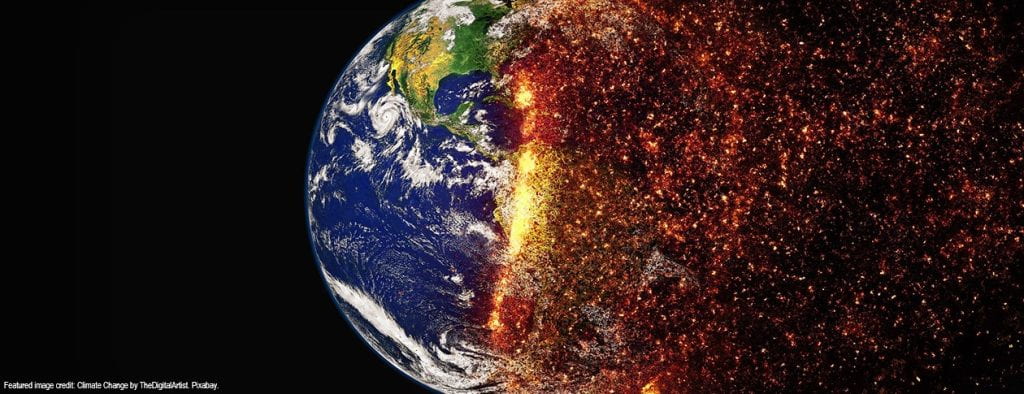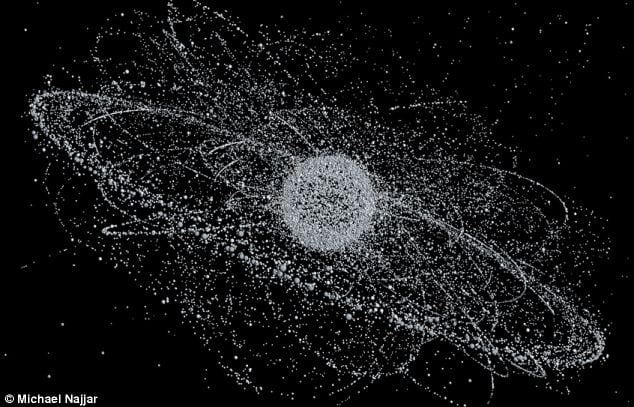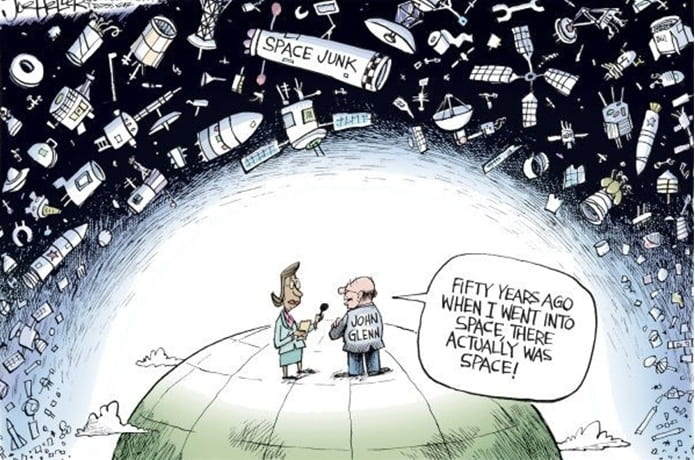Have you been wondering if hurricanes are getting worse? Bloody hell, so have I! According to the US National Aeronautics and Space Administration (NASA), hurricanes have been getting worse, at least in the North Atlantic, though there is plenty of cautious language to go around the message.
Here’s the thing–nowadays, we see hurricanes coming, like this:
Left, Hurricane Humberto, as seen from space (source: National Oceanic and Atmospheric Administration); right, Hurricane Ian as tracked by The Weather Channel (source: The Weather Channel).
The great thing about seeing a hurricane coming, sometimes for days in advance, is the ability to assess options about whether or not, or how to, get out of the way. Prior to 1957, when the Soviet Union launched Sputnik 1, we had no satellites, and sailing the Seven Seas could be considerably more bracing as a result.
Artist’s rendering of the shipwreck of Rose-in-Bloom offshore of Barnegat Inlet, New Jersey, in 1806. Prior to the advent of modern satellite technology, ship captains and crews had no good way to know how to avoid sailing into a hurricane. Source: Schwartz, Rick (2007) Hurricanes and the Middle Atlantic States, Alexandria, Virginia: Blue Diamond Books ISBN: 0-9786280-0-4.
I have had my own taste of this. When I was young and taking training for my pilot’s license, there was no GPS. We largely relied on navigation with a Very High Frequency Omnidirectional Range station (VOR). In the photo example below, the VOR looks like a little lighthouse, right? It functions a bit like one, too, only requiring considerably more technical understanding by the user than a lighthouse. The problem is, during much of my life, I have lived in places where there is 1) terrible, sudden, and unpredictable weather, and 2) no VOR (or only on certain mountains, making signal unreliable to the user, depending on flight conditions). In the absence of VOR, one is reliant on “contact navigation,” i.e., “look down (if you can find down) and hope you can see something.” Fun times.
Left – VOR, a primary navigation aid for planes before the magic of GPS; right – “contact navigation.” When I learned to fly, the flying ace who was my mentor used to swear that this was much more effective than it might appear, as long as one’s scarf was arranged dashingly. NAVSTAR GPS, take me away!
The common theme to these examples of navigation is the extreme comfort and convenience that so many inhabitants of the world today enjoy now, thanks to modern satellite technology. Arguably, we are so accustomed to the benefits that orbiting satellites confer on our lives that most of us have no reasonable reckoning of how much of our lives would be affected if there were some disruption of service. A sensible analysis would be too lengthy for this blog post, however, a recent paper published in the journal Frontiers in Space Technology lists the following industries (and associated goods and services to us) that would be substantively deleteriously affected if satellites were compromised: the defense sector; the airline industry; the marine/shipping industry; the railway industry; the highway systems sector; all industries dependent on “the fourth dimension” of timing (most industries with international economic activities, additionally electrical grids and communications companies); agriculture; and effectively all areas of the energy and utilities sectors. Clearly, effects on these industries have potential knock-on effects on our individual access to food, water, and healthcare.
Ironically, a significant and present threat to the security of satellite technology is space technology itself, and there are notable features of feedback between threats to satellite technology and climate. Enter Kessler Syndrome (alternately Kessler effect). To understand this syndrome, we first need to understand something about space junk. There is a whole hell of a lot of it, as the graphic below illustrates.
Map of space junk, that is, the pieces that are large enough to track. Source: DailyMail
When we generate trash on the planet, we bury it, burn it, compost it, or subject it to some other activity that generally renders it less conspicuous. With a distinct absence of vacuum cleaners in space, however, bits of derelict spacecraft, satellites, and associated materials tend to pile up. Eventually, this pollution can be so common that existing and/or new objects introduced into the same area, for instance, new satellites or new spacecraft, have an enhanced chance of a catastrophic collision. Imagine if, when you are flying on a commercial airliner, there is a lot of other stuff suspended in the atmosphere up there with you. You can see it going by. Sooner or later, your plane or another will collide with such.
In space, each collision between pieces of space junk generates new space junk (more pieces going more places), and, of course, human activity ensures that new space junk is created daily. A famous example occurred in 2009 when the IRIDIUM 33 telecommunications satellite was struck by the dead, uncontrolled Russian satellite Cosmos 2251. Two pieces became an estimated 2,100 new pieces of debris1. The overall effect of Kessler Syndrome is that “fragments from future collisions will be generated faster than atmospheric drag will remove them.” This process is called a “collisional cascade.” If the cascade occurs, it could entail that using satellites as we do now will be difficult for many generations.
How does Kessler Syndrome relate to climate? Earth’s climate, in a manner of speaking, extends to all levels of the atmosphere. While temperatures are increasing, on average, in the part of the atmosphere that we inhabit, in the range of 15–500 kilometers above Earth’s surface (about 9–300 miles), cooling is occurring. This decrease in temperature reduces the air density in part of the upper atmosphere, i.e., a contraction of part of the upper atmosphere. This contraction means less “atmospheric drag” in the upper atmosphere that is now highly cluttered with space junk, and consequently, less space junk will be pulled back down to earth. The rate of space junk accumulation will increase. Some estimates nearly double the amount of space junk we can expect by 21002.
Diagram of Earth’s atmosphere. Humans only experience a small portion of the troposphere, which is itself a small part of the atmosphere. Climate affects the whole atmosphere, though in different ways. As the climate nearer to Earth’s surface warms up, there is an associated cooling and contraction of the upper atmosphere. The result is less frictional drag near the altitude of satellites, and therefore, space debris becomes more persistent with climate change.
There is another way, however, that Kessler Syndrome relates to climate change. Around half of the 50 Essential Climate Variables monitored by the Global Climate Observing System are tracked from space. Air temperatures and sea temperatures around the planet are monitored from orbit. The effects of the additional energy in the atmosphere are measured from space, as well as the outcome of that energy, such as the cool picture of Hurricane Humberto featured above. In a recent article from The Hill boldly entitled “Utilizing space to fight climate change on Earth,” the author ended by commenting that the vision only holds if we can avoid Kessler Syndrome.
In some ways, I wonder if Kessler Syndrome might be the answer to the riddle instead of capricious aspirations to fight climate change with world-beating space technology. If space technology became unsustainable, the world would slow down considerably. As there are still many humans alive who have lived in a world devoid of the benefits of satellite technology, we can say with certainty that it would not be the end of the world.
1 For a good read on Kessler Syndrome, including recent quotes from Kessler himself, check out this article from Yale Climate Connections: https://yaleclimateconnections.org/2012/04/the-climate-problem-weve-been-here-before/
2 Cnossen, 2022. A realistic projection of climate change in the upper atmosphere into the 21st Century, Geophys Res Lett, doi: 10.1029/2022GL100693.
Brown et al., 2021. Climate change in space: Thermospheric density reductions in LEO and the impact on the debris environment. Proc. 8th European Conference on Space Debris, Darmstadt, Germany, 20–23 April 2021, published by the ESA Space Debris Office Ed. T. Flohrer, S. Lemmens & F. Schmitz, (http://conference.sdo.esoc.esa.int, May 2021).






